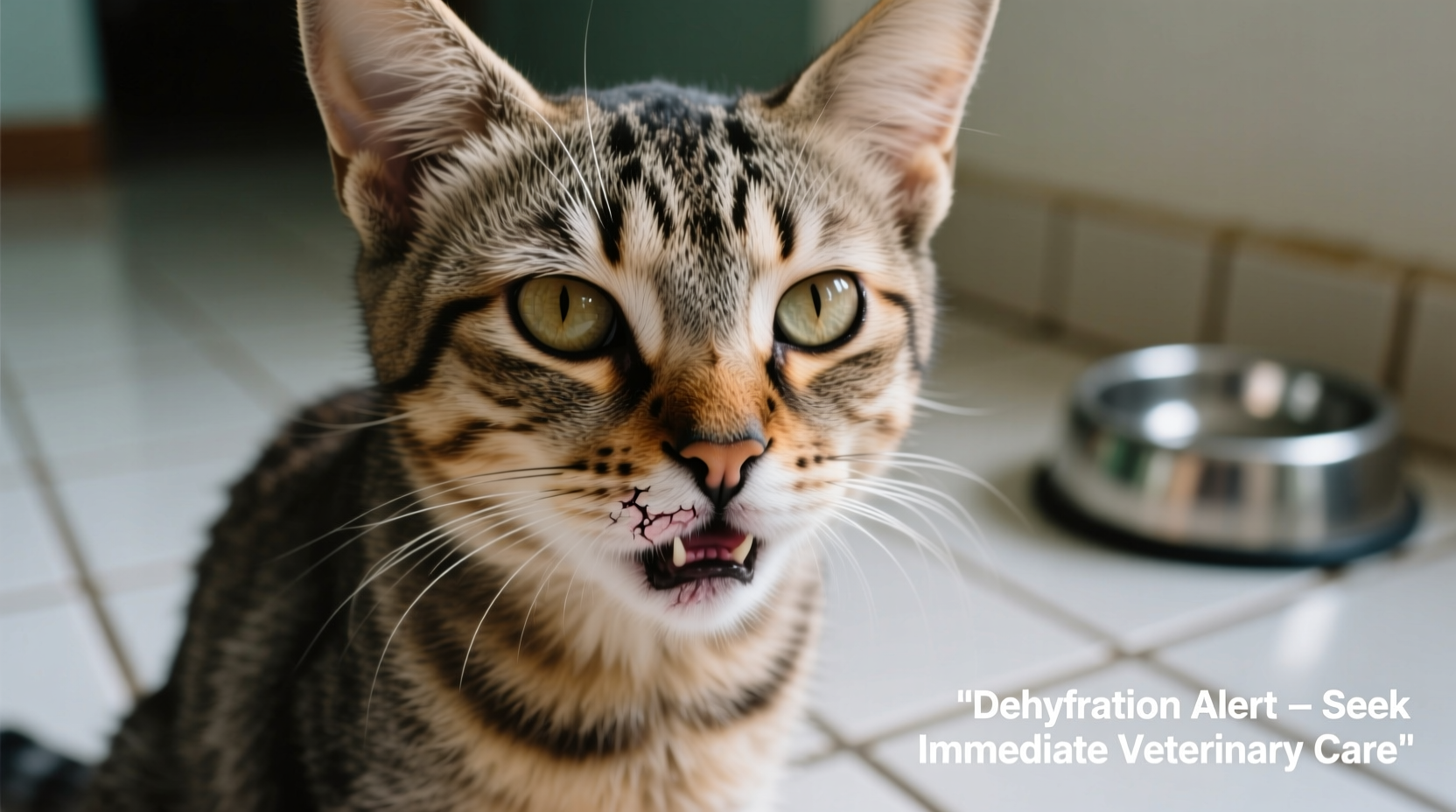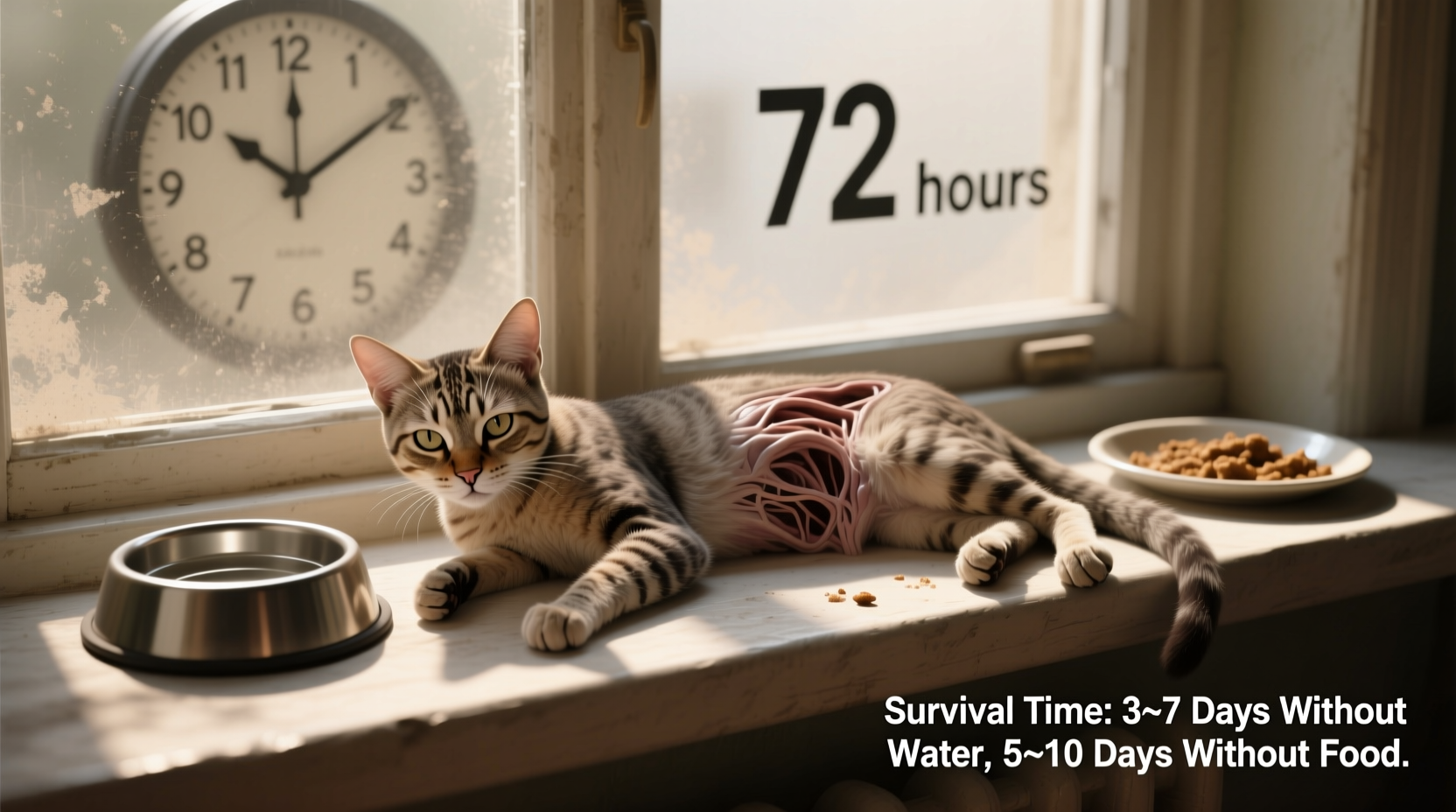Adult cats can typically survive 3-4 days without water and up to 2 weeks without food, but these timelines vary significantly based on health conditions, age, and environmental factors. Dehydration becomes life-threatening within 24-72 hours, while organ failure can begin after just 3 days without food. Immediate veterinary care is critical if your cat hasn't eaten or drunk for 24 hours.
If your cat isn't eating or drinking, you're probably feeling anxious and searching for urgent answers. Understanding the precise timelines and warning signs could mean the difference between life and death for your feline companion. This guide provides medically accurate information from veterinary experts to help you recognize critical symptoms and take appropriate action.
Understanding the Critical Survival Timeline
While general timelines exist, your cat's actual survival window depends on multiple physiological factors. Here's what veterinary research shows about the progression of dehydration and starvation:
| Timeframe | Without Water | Without Food | Combined Deprivation |
|---|---|---|---|
| 24 hours | Early dehydration begins; reduced urine output | Normal for healthy cats; no immediate concern | Mild dehydration; energy reserves intact |
| 48 hours | Moderate dehydration; dry gums; lethargy | Concern begins; liver stress starts | Significant dehydration; organ stress begins |
| 72 hours | Severe dehydration; sunken eyes; rapid heartbeat | Organ damage begins; hepatic lipidosis risk | Critical condition; immediate veterinary intervention required |
| 96+ hours | Lethal without treatment; kidney failure | Life-threatening; multi-organ failure likely | Survival unlikely without immediate intensive care |
This timeline data aligns with findings from the American Veterinary Medical Association's feline nutrition guidelines, which emphasize that water deprivation poses a more immediate threat than food deprivation due to cats' limited ability to concentrate urine.
Early Warning Signs Requiring Immediate Attention
Recognizing these symptoms early can save your cat's life. Don't wait for the full 72-hour window if you notice:
- Dry, sticky gums - Press gently on the gum line; it should return to pink within 2 seconds
- Skin tenting - Gently pinch skin at the shoulder; slow return indicates dehydration
- Reduced urine output - Fewer than 2-3 clumps in litter box daily
- Extreme lethargy - Not moving for extended periods
- Hypothermia - Cool ears, paws, and tail
According to Cornell University's College of Veterinary Medicine, cats with pre-existing conditions like kidney disease may show critical symptoms within 12-24 hours of water deprivation. Their research shows that senior cats and kittens have significantly shorter survival windows than healthy adult cats.
What Happens Inside Your Cat's Body
Understanding the physiological processes explains why time is so critical:
Water Deprivation Effects
Without adequate hydration, your cat's blood becomes more viscous, forcing the heart to work harder. The kidneys reduce urine production to conserve water, leading to toxin buildup. After 48 hours, electrolyte imbalances can cause cardiac arrhythmias. The Veterinary Centers of America reports that severe dehydration can cause irreversible kidney damage within 72 hours.
Food Deprivation Effects
Cats metabolize fat differently than humans. After 3 days without food, their bodies start breaking down fat stores, overwhelming the liver with fatty acids. This condition, called hepatic lipidosis, can cause permanent liver damage. The Merck Veterinary Manual indicates that hepatic lipidosis becomes likely after just 48-72 hours of complete food deprivation in cats.

Immediate Action Steps for Cat Owners
If your cat hasn't eaten or drunk for 24 hours, follow these vet-recommended steps:
- Assess hydration status using the skin tent test and check gum moisture
- Offer multiple water sources including running water from a faucet
- Try meat-flavored broth (sodium-free) to encourage drinking
- Use a syringe to administer small amounts of water (1-2 mL at a time)
- Contact your veterinarian immediately if symptoms persist beyond 24 hours
Never force large amounts of water at once, as this can cause aspiration pneumonia. The American Association of Feline Practitioners emphasizes that intravenous fluids administered by a veterinarian are the most effective treatment for moderate to severe dehydration.
Preventing Dehydration and Starvation Emergencies
Proactive measures significantly reduce risks:
- Provide multiple fresh water sources throughout your home
- Consider a cat water fountain to encourage drinking
- Monitor food and water intake daily
- Schedule regular veterinary checkups, especially for senior cats
- Learn to recognize subtle changes in your cat's normal behavior
Research from the Journal of Feline Medicine and Surgery shows that cats with chronic kidney disease require 30-50% more water intake than healthy cats. If your cat has any pre-existing conditions, discuss specific hydration strategies with your veterinarian.
When to Seek Emergency Veterinary Care
Don't wait if your cat shows any of these critical symptoms:
- No urine production for 24 hours
- Difficulty standing or walking
- Labored breathing
- Body temperature below 99°F (37.2°C)
- Complete refusal of both food and water for 24+ hours
Time is critical in these situations. The American Animal Hospital Association reports that cats receiving treatment within 24 hours of symptom onset have significantly better outcomes than those treated after 48 hours.











 浙公网安备
33010002000092号
浙公网安备
33010002000092号 浙B2-20120091-4
浙B2-20120091-4